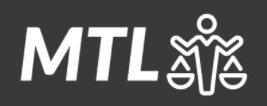If you owe the IRS back taxes, you need to know about the IRS levy. This is the primary tool the IRS uses to collect unpaid taxes.
About the IRS Levy
The word “levy” is a legal term that refers to the process of taking property. Creditors are able to levy on property to satisfy unpaid debts. The law allows the IRS to do this too. The law gives the IRS broad powers to levy on property. It also provides limits the IRS’s ability to levy in some situations.
The IRS is able to levy on most property by simply issuing a “notice of levy” to the taxpayer or to the party that has the taxpayer’s property. This “notice” is a form that IRS employees fill out. The IRS can issue this notice without having to first get court approval.
The IRS levy is backed by penalties for third parties who fail to comply with an IRS levy. Section 6332 provides that a party who fails to turn over property pursuant to an IRS levy is liable for the value of the property levied upon and not turned over plus fifty percent of the value recovered. The only defense for the penalty is reasonable cause, which normally requires a showing of circumstances beyond the person’s control that prevented compliance with the levy.
If the third party owns all or part of the property, the third party generally still has to comply with the IRS levy but is able to bring a wrongful levy suit to recoup the property after the fact.
Property the IRS Levies
While the IRS can levy on any property, it usually focuses on bank and other financial accounts, wages and government benefits, and vehicles or real estate.
IRS Levy on Bank and Other Accounts
Bank accounts are one of the first assets the IRS will typically try to levy on as they are the easiest assets for the IRS to take and dispose of. This is particularly true of checking and savings accounts that only hold cash.
Unlike IRS levies on other property, the IRS levy on a bank account captures only the funds in the account on that day. Funds deposited into the account the day after the levy or later are not included.
Find out more about the IRS bank levy.
Garnishing Wages or Government Payments
Wages and other recurring payments that will be paid to the taxpayer, such as Social Security payments, are also popular targets for IRS collection actions.
The IRS is able to levy on all but a small amount of wages. This exempt amount is equal to the standard deduction and personal exemptions the taxpayers is entitled to, divided by 52 for taxpayers who are paid weekly, for example.
It should be noted that unemployment benefits and workmen’s compensation payments are one of the few items that are exempt from the IRS’s levy.
Unlike levies on bank and other accounts, the IRS levy on wages and recurring payments is not limited to one amount on a specific date. The levy continues from the date the levy notice is received by the third party to the date the levy release form is received by the third party.
Find out more about IRS wage garnishments.
Seizing Vehicles or Real Estate
Vehicles and real estate are usually one of the last items the IRS will consider when levying on the taxpayer’s property.
Section 6334 requires the IRS to obtain his managers and court approval before seizing the taxpayer’s primary residence. This exception to the IRS’s unfettered power to levy on property includes a property used by the taxpayer’s spouse or former spouse or minor children.
The IRS cannot levy on a residence if the IRS balance is $5,000 or less.
Release of the IRS Levy
Reasons for Release
The IRS is required to release a levy in the following circumstances:
- The tax liability for which the levy was made is satisfied or becomes unenforceable by reason of lapse of time,
- Release of the levy will facilitate the collection of the liability,
- The taxpayer has entered into an installment agreement under to satisfy the liability,
- The IRS has determined that the levy is creating an economic hardship due to the financial condition of the taxpayer, or
- The fair market value of the property exceeds such liability and release of the levy on a part of the property could be made without hindering the collection of such liability.
There are a number of procedural and legal rules for each of these. For example, economic hardship means that the levy will cause an individual taxpayer to be unable to pay his or her reasonable basic living expenses. This is set out in the regulations. They go on to say that reasonable basis living expenses do not include the maintenance of an affluent or luxurious standard of living.
The Levy Release Request
The taxpayer has to request that an IRS levy be released. This can be done in writing or verbally. The request itself must include the following information:
- The name, address, and taxpayer identification number of the taxpayer;
- A description of the property levied upon;
- The type of tax and the period for which the tax is due;
- The date of the levy and the originating Internal Revenue district, if known; and
- A statement of the grounds upon which the request for release of the levy is based.
Once the IRS receives a request with this information, it will typically make a decision within 30 days. The IRS has an expedited process for the sale of business assets, which usually results in a decision within 10 days.
The IRS’s decision will be reflected in a determination letter that is provided to the taxpayer.

